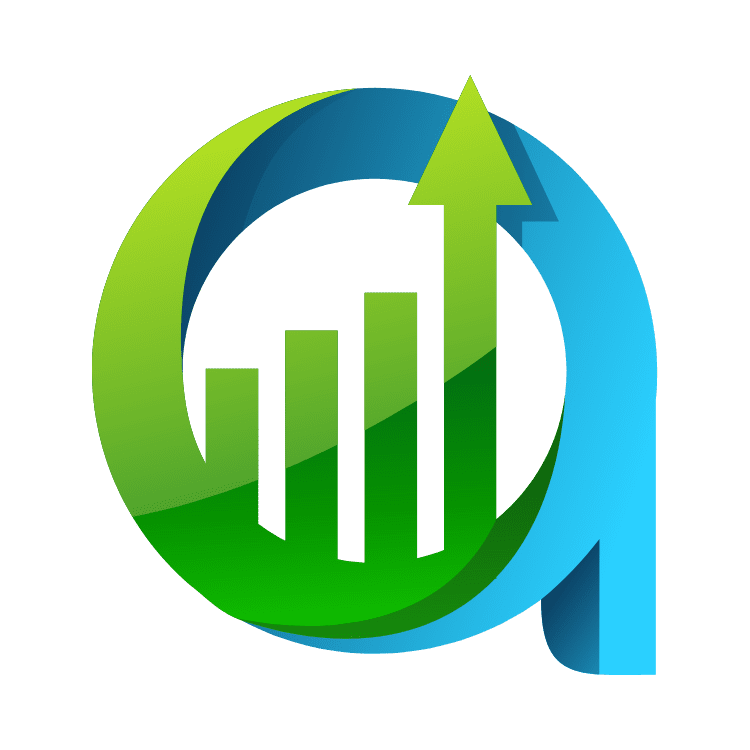This article aims to demystify the process of obtaining public assistance by offering a comprehensive guide on eligibility requirements critical for various programs tailored to assist families in need. We will explore a variety of public assistance programs, emphasize the importance of SNAP and Lifeline among others, and provide detailed instructions on how to apply online for these free services. Additionally, we furnish tips for compiling a successful application, ensuring that readers are well equipped to navigate the system efficiently. By breaking down the steps to access these vital resources, our guide endeavors to simplify the path to public assistance, making it more accessible to everyone.
Understanding Public Assistance
Public assistance encompasses programs providing either cash or in-kind benefits to individuals and families from governmental entities. These programs are broadly categorized into social welfare and social insurance programs. Social welfare programs are typically based on means-tested eligibility criteria focused on low income, while social insurance programs often depend on factors like age, employment status, or veteran status.
Major federal, state, and local social welfare programs include Temporary Assistance for Needy Families (TANF) and the Supplemental Nutrition Assistance Program (SNAP), which aim to support financial stability and strengthen families. On the other hand, significant social insurance programs include Veterans Administration Healthcare and various pension schemes, designed to provide essential services based on specific eligibility criteria.
Furthermore, public assistance programs are designed to aid individuals and families in acquiring necessities such as food, housing, and healthcare, which are crucial for maintaining basic living standards. However, individuals seeking assistance must be vigilant as scammers often target vulnerable populations.
Eligibility Criteria
Income Requirements
To qualify for various social assistance programs, households must meet specific gross monthly income limits, which vary depending on the program and household size. For example, in the Supplemental Nutrition Assistance Program (SNAP), a one-person household’s income limit is $1,287, while a two-person household’s limit is $1,736. The gross monthly income cannot surpass 130% of the federal poverty level for SNAP. Other programs might have different thresholds or additional requirements, such as proof of employment or participation in job training programs.
Family Size Considerations
The size of a family significantly impacts eligibility and benefit levels in many public assistance programs. For instance, SNAP guidelines increase the benefit amount by a set amount for each additional household member beyond a certain number. Different programs and agencies may define family units differently, affecting the number of cases receiving assistance. Some programs, such as Temporary Assistance for Needy Families (TANF), might consider extended family members or non-traditional household compositions when determining eligibility and benefit amounts.
Disability and Age Criteria
Special rules often apply to households with elderly or disabled members across various social programs. In SNAP, individuals are considered elderly if they are 60 years or older and disabled if they meet specific federal or state disability criteria. These households may have higher resource limits, such as $2,750 or $4,250, depending on the program and the presence of elderly or disabled members. Other programs, like Supplemental Security Income (SSI), provide benefits specifically to low-income elderly or disabled individuals. Additionally, state-specific programs like Colorado’s Aid to the Needy Disabled State Only (AND-SO) program require applicants to be between 18-59 years old, have a qualifying disability, and exhaust all other public financial assistance options.
Other Considerations
Many social assistance programs have additional eligibility criteria beyond income, family size, disability, and age. These can include:
- Citizenship or Residency Status: Most programs require recipients to be U.S. citizens or legal residents. Some states offer assistance to undocumented immigrants through state-funded programs.
- Employment Status: Programs like TANF often require recipients to participate in work-related activities, such as job training or employment, to receive benefits.
- Asset Limits: Certain programs, such as Medicaid, may have asset limits in addition to income limits, restricting eligibility to those with minimal financial resources.
- Special Circumstances: Programs may also consider other factors such as pregnancy, single parenthood, or being a caretaker for a dependent when determining eligibility and benefit levels.
Types of Public Assistance Programs
Food Assistance (SNAP and WIC)

The Supplemental Nutrition Assistance Program (SNAP) aids low-income families by enhancing their food purchasing power to ensure they can buy healthy food, aiding in their move towards self-sufficiency. The Women, Infants, and Children (WIC) program supports the health of low-income women, infants, and children up to age 5 by providing supplemental foods, healthcare referrals, and nutrition education.
Housing Assistance (Section 8 and Public Housing)

The Housing Choice Voucher Program, also known as Section 8, assists very low-income families, the elderly, and the disabled to afford safe housing in the private market. Public Housing Agencies (PHAs) administer locally tailored voucher programs that often prioritize individuals who are homeless, living in substandard housing, or spending more than 50% of their income on rent.
Medical Assistance (Medicaid and CHIP)

Medicaid and the Children’s Health Insurance Program (CHIP) offer free or low-cost health coverage to families, and children, with some states extending coverage to all individuals below certain income levels. These programs are tailored to provide comprehensive health coverage including essential services for children, pregnant women, the elderly, and individuals with disabilities.
Utility Bill Assistance

Programs like the Low Income Home Energy Assistance Program (LIHEAP) help eligible households with their heating and cooling energy costs, bill payment assistance, energy crisis assistance, and weatherization and energy-related home repairs. In New York, for example, the program is designed to assist households that meet specific income criteria based on the state median income.
Unemployment Benefits

Unemployment insurance provides financial assistance to individuals who have lost their jobs through no fault of their own, with benefits based on previous earnings and a requirement to seek new employment. The program’s eligibility and benefits can vary significantly between states, with some providing additional support like COBRA health insurance continuation.
How to Apply for Public Assistance
Gather Necessary Documents
To apply for public assistance, individuals must provide a variety of documents to prove eligibility. These include proof of identity like a driver’s license or birth certificate, residency documentation such as a lease or utility bill, Social Security Numbers for all applicants, and proof of income, which could be recent pay stubs or tax returns. Additionally, documentation of monthly expenses like child care, shelter costs, and medical expenses for elderly or disabled members is required.
Online Application Process
Applicants can initiate the process by applying online, which is often the fastest method to get the application processed. Websites like BenefitsCal.com offer direct access to apply for programs like CalFresh and CalWORKs. Applicants can also download applications in various languages and submit them electronically. This online submission ensures a quicker response and easier tracking of the application status.
Interview and Verification Process
After submitting the application, an interview with an eligibility worker might be required to verify the provided information and discuss any additional needs. This interview can sometimes be conducted over the phone, and in some cases, telephonic signatures are accepted to streamline the process. Verification of identity, income, and residency is crucial and must be completed to finalize the application process.
Follow-Up and Approval
Once all documents are submitted and the interview is completed, the county agency will review the application. Approval times can vary, but benefits like SNAP are typically processed within 30 days. In emergency situations, expedited services are available, and benefits could be approved within 7 days. Applicants should maintain contact with the agency to track their application status and provide any additional information if required.
Tips for Successful Applications
Understanding Common Application Pitfalls
Many applicants rush through the application process, leading to simple errors that can significantly impact the outcome. It’s essential to read each question carefully and seek help if anything is unclear, particularly for those who may find online applications challenging. Additionally, a common mistake is misunderstanding income reporting requirements, such as failing to declare small amounts of money earned from activities like babysitting. Being transparent about all income ensures a smoother review process.
Seeking Help from Community Organizations
Applicants should not hesitate to utilize resources offered by community organizations. Local groups like SC Thrive provide assistance in accessing public benefits and completing applications. These organizations can be invaluable, especially for those facing barriers to accessing services or needing help navigating complex application procedures.

Maintaining Accurate Records
Keeping detailed and organized records is crucial for a successful application. Applicants should establish a separate cost accounting system to record all disaster-related activities and expenditures, ensuring all documentation is ready for audits and retained for at least three years post-grant closure. Designating a responsible person to manage all disaster-related documentation is highly recommended. This approach not only facilitates the verification process but also ensures that all eligible work and costs are accurately documented and reimbursed.
Conclusion
Navigating the labyrinth of public assistance systems marks a pivotal journey for families aiming to secure a lifeline amidst financial challenges. This guide has illuminated the path to accessing diverse programs like SNAP and Lifeline, underscoring the importance of understanding eligibility criteria and application nuances. By distilling complex information into actionable steps, we’ve endeavored to empower readers with the knowledge to efficiently leverage these essential services. The journey through eligibility requirements, program specifics, and application tips underscores our commitment to simplifying access to public assistance, making it less daunting for first-time navigators.
As we conclude, remember that the ultimate goal of public assistance is to offer a bridge toward stability and self-sufficiency for those who find themselves in precarious financial positions. The significance of these programs extends beyond temporary relief; they are vital for nurturing resilience and facilitating empowerment among vulnerable populations. In fulfilling our mission to guide and support, we encourage our readers to explore these opportunities further and make informed decisions about their path to financial aid. Subscribe! Our promise is to help you find the best option possible, ensuring that no stone is left unturned in the quest for assistance and upliftment.
Relevant Links to Help You Get Started
Navigating government assistance programs can be challenging, but there are numerous resources available to help you. Below, you’ll find links to key government services and programs that can provide financial aid, healthcare, housing support, and other essential services.
- Food assistance: https://www.usa.gov/food-help
- Housing help: https://www.usa.gov/housing-help
- Utility bills: https://www.usa.gov/help-with-utility-bills
- Temporary assistance: https://www.usa.gov/welfare-benefits
- Health insurance: https://www.usa.gov/health-insurance











